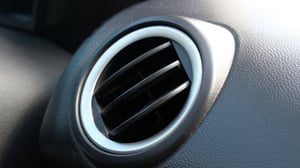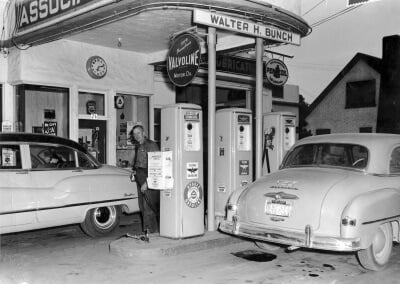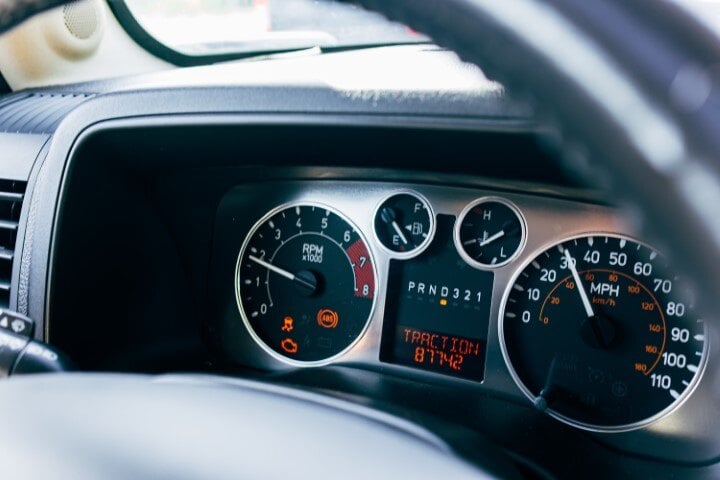Automakers Get Hi-Tech with New Apps for Your Car
The Detroit Auto Show from earlier in the year not only showcased the best new car and truck models for the upcoming year, it also gave tech...

As we approach the summer months our vehicle air conditioners become a priority, especially in the southern states where the humidity can sometimes be unbearable. There are a few visual checks and a few manual procedures that can be done by most individuals with a little mechanical ability. Here are a few things that can help you feel confident that your air conditioner is ready to take on the summer road heat.
 Air conditioning systems in vehicles operating in the colder northern climates need to be run weekly during the non-air conditioning months for about ten minutes. This will circulate the oil in the system, keeping the seals lubricated and preventing them from drying out (which would cause the Freon to leak out.) Running the air conditioner periodically will also dry out the air chambers and reduce the chances of fungus and mold growing in them, causing undesirable odors (or worse).
Air conditioning systems in vehicles operating in the colder northern climates need to be run weekly during the non-air conditioning months for about ten minutes. This will circulate the oil in the system, keeping the seals lubricated and preventing them from drying out (which would cause the Freon to leak out.) Running the air conditioner periodically will also dry out the air chambers and reduce the chances of fungus and mold growing in them, causing undesirable odors (or worse).
Beyond the essentially periodic running of the system, you should inspect your air conditioner to head off problems. This is something almost anyone can do. We start our under-hood inspection by inspecting the A/C condenser located in front of the radiator. The condenser is where Freon is turned from a gas back into a liquid (it condenses). The condenser needs to be free of anything that would restrict the flow of air through it, such as a blocked bug screen. If the condenser is restricted the efficiency of the air conditioner will be reduced. The condenser can be easily cleaned with a garden hose with a high-pressure nozzle.
The next item on our list is checking the engine fan which can be mechanical or electrical. If you have an electric cooling fan mounted to the radiator it must always be running when an air conditioner is in the on position. If the fan is not running it can result in excessively high pressures in the system which can burst the hoses in the system, causing the loss of Freon and the oil in the system. Some systems have two electric fans but only one of them needs to be running when the air conditioning system is on. If you are driving your vehicle and the air coming from the air ducts is cold but rises considerably when the engine is idling, this is a good indication the cooling fan is inoperative.
If instead, you have a mechanical clutch fan that has a thermostat in the center, they are supposed to tighten up and spin faster when the air comes through the condenser and the radiator heats up. There is a quick test you can perform to check the condition of the fan clutch. With the engine cold and off, reach in and manually turn the fan. The fan should spin freely - which is exactly what it should do. When the engine is hot you should feel resistance or drag as you are rotating it. If it is loose and spins freely when the engine is hot the chances are you have a defective fan clutch. As stated in the last paragraph, if the air coming from the air ducts is cold when driving but warms up considerably when the vehicle is idle, this is a good indicator you have a defective clutch fan.
Checking the fan belt is next and is done visually. Inspect the underside of the belt for cracks. If cracks are found, the belt should be replaced. On older vehicles, a belt tension gauge is needed when replacing the belt to prevent excessive pressure from being allied to components being driven by the belt. This can cause premature failure of these driven items but is not a problem with newer vehicles that have a spring-loaded belt tensioner that applies the correct amount of tension to the belt.
At this point, we are going to check the operation of the air conditioning system. Start the engine and place the temperature control in the coldest position and the fan speed switch in the highest position. The front of the air conditioner compressor has a clutch that will engage to turn the internal components. If you visually look at the compressor you should see the clutch and drive pulley turning together. The clutch will come on and off approximately every 20 to 30 seconds, which is normal. If the clutch cycles on and off quickly every few seconds this is a good indicator that the system is low on Freon.
Air conditioning systems can lose 10% to 15% of Freon in a year. This is where you will want to use the services of a trained professional. Every air conditioning system has an exact amount of Freon that should be in the system. Usually, there is a tag on the top of the radiator housing, on the underside of the hood, or on the chamber holding the system evaporator. This tag lists the type and amount of Freon in pounds and ounces that needs to be in the system for efficient and proper operation. Many times, you can see an area of leakage because as the Freon leaks out it also brings oil with it. If you see oily or black residue on fittings or hoses - this is a good indication of leakage. The use of a leak-detecting dye or an electronic leak detector are other ways to find leaks.
If a system is just low on Freon it is a bad idea to just add to it. There is no way of knowing how much Freon is in a system and if you add too much you run the risk of damaging the compressor or causing extremely high pressure which can cause hoses to burst. The correct way to recharge an air conditioning system is to evacuate everything out and start from scratch by putting in the exact amount listed on the tag mentioned earlier. A set of air conditioning gauges are necessary in order to perform a recharging procedure and a vacuum pump will also be needed for this operation. Applying over 17 inches of vacuum to a system it will cause moisture to be boiled out because water boils at 17 inches of vacuum at sea level. The vacuum pump should be left on for 20 to 30 minutes to ensure all moisture has been removed. One of the gauges is a low-pressure gauge which has a vacuum side to it so you will know how much vacuum is being applied. After 20 to 30 minutes of evacuating the system, both gauges are turned off so the technician can observe the vacuum side of the low-pressure gauge. They should wait about five minutes to see if there is any loss of vacuum. The rule of thumb is if the system holds a vacuum it will hold Freon.
Beware of the do-it-yourself recharge kits that can be purchased from most parts stores. You must remember that there may be other reasons besides the loss of Freon causing an air conditioner to be inoperative. What would happen if something else beyond low Freon was the cause of the system's problems? If Freon is added to an already-full system, it can cause the destruction of the compressor because of liquid Freon entering it, or the system hoses themselves can burst. None of that is good.
Great caution should be taken when working on an air conditioning system. Safety glasses should be worn at all times because if a line does burst and the Freon hits your eyes it will freeze them instantly and can cause blindness. Oil charge kits are also sold at the parts stores and should only be used by a trained professional. If there is too much oil in the system, it will reduce the efficiency of the unit. Oil is usually not needed unless system components are replaced.
When an air conditioning system is operating, you will see water dripping under the vehicle. This is condensation coming off the evaporator which has been removed from the passenger compartment and is perfectly normal. If you find water running in on the floor on the passenger side and not under the vehicle, this is an indication that the condensation drains may be plugged. Over time fungus and mold can grow where water is sitting and can plug the drain port or hose to the outside. In most cases, this will need to be cleaned out from the underside of the vehicle.
Last of all the most common question I get is “why does it take a while for the air to get cold?” If we have a properly working air conditioning system, there are a few reasons for this starting with the heat of the dash from sitting in the sun. It will take a few minutes for the dash to cool down. Also, a system is more efficient when the humidity is removed from the vehicle. This also takes a few minutes for this to happen and you can see it dripping on the underside of the vehicle. And finally, most newer vehicles have a cabin air filter which when restricted will reduce the amount of air coming out of the dash. This filter should be changed a couple of times a year.
It is wise to inspect and service your air conditioning system before you get to the heat of summer when shops that service air conditioners are backed up. Also, people tend to spend more money than necessary when they are overheated. Beware of shops that tell you that Freon wears out and needs to be replaced for that reason because it does not. Also, a lot of quick lube shops push recharging your air conditioner because it is an easy and profitable up-sell. The odds are they are just adding Freon and not doing a proper recharging procedure as described in this article.

The Detroit Auto Show from earlier in the year not only showcased the best new car and truck models for the upcoming year, it also gave tech...

What was gas like back in the day when antique cars were in their prime?

Just like your physical health, one small problem in the car can throw the whole operation of the vehicle off. One little ache or pain can slow us...